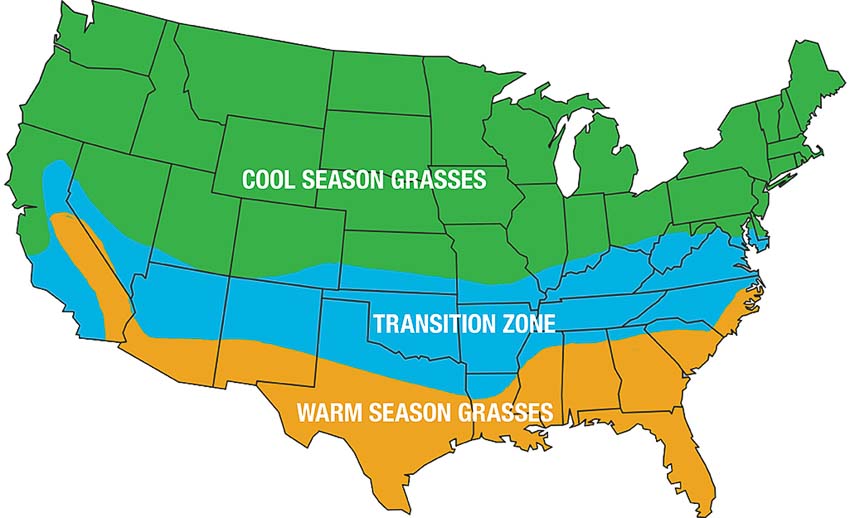Growing a lush green lawn requires a lot of hard work. Of course, it helps to practice proper lawn care and have the right tools, but one of the most important ways to grow a well-manicured lawn is to start by choosing the best type of grass for your regional climate.
Understanding Different Grass Types
There are over 11,500 species of grass classified, and when it comes to lawns, there are a lot of choices. About a dozen types of grass are commonly used, and most lawns are planted with a mix to meet various environmental conditions.
Cool-Season Grasses: Fescue, Kentucky Bluegrass, and Ryegrass
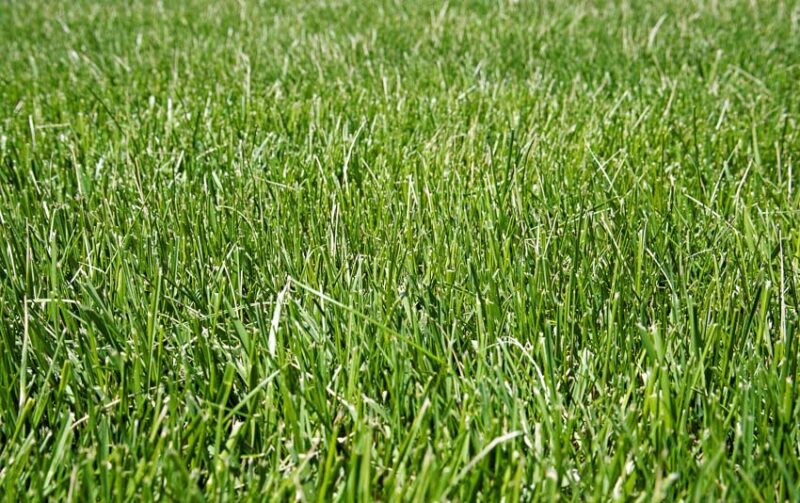
In the United States, cool-season grasses are best grown in cool, humid areas. The northern climates of the Northeast, Pacific Northwest, and Midwest regions have mild summers and long winters.
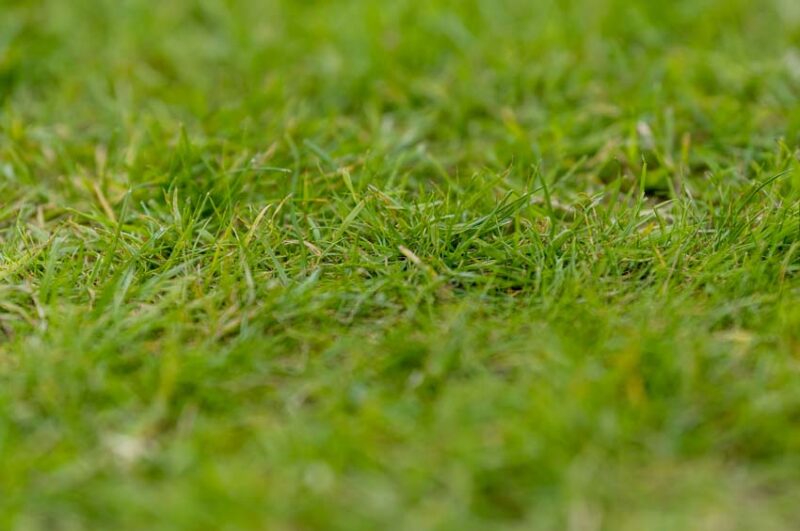
The best grass types for cool-season regions are fescues, Kentucky Bluegrass, and ryegrass. These grasses need more moisture than warm-season grasses, and they grow best in the spring and fall when temperatures are between 55°F and 90°F (13-32°C).
Warm-Season Grasses: Bermuda, Zoysia, and St. Augustine
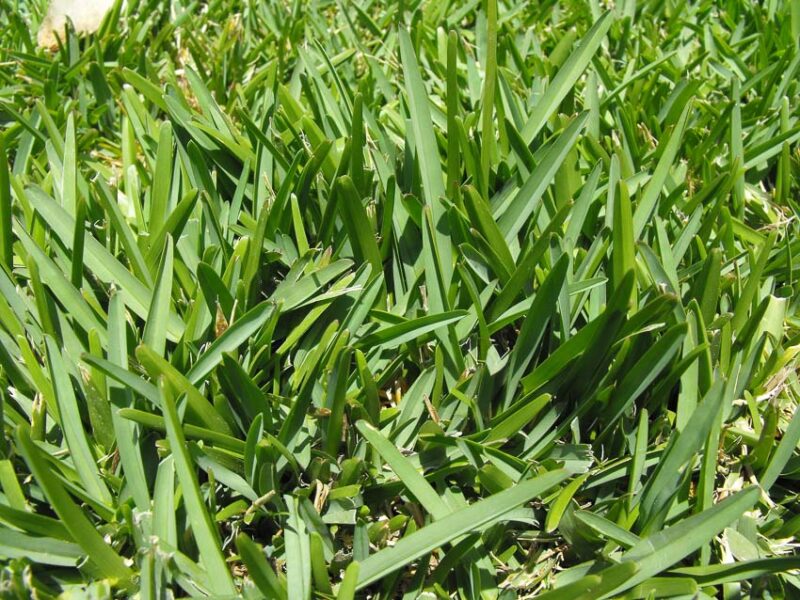
Warm-season grasses thrive in the hot, dry climate regions of the southern United States. Originally found growing in subtropical regions, warm-season grasses thrive under the conditions presented by hot summers and mild winters in states like California, Texas, and Florida.
The most popular warm-season grasses are Bermuda grass, Zoysia, and St. Augustine grass. Warm-season grasses are in peak growth cycles during late spring and summer and prefer soil temperatures above 65°F (18°C).
Drought-Tolerant Grasses: Buffalo and Bahia
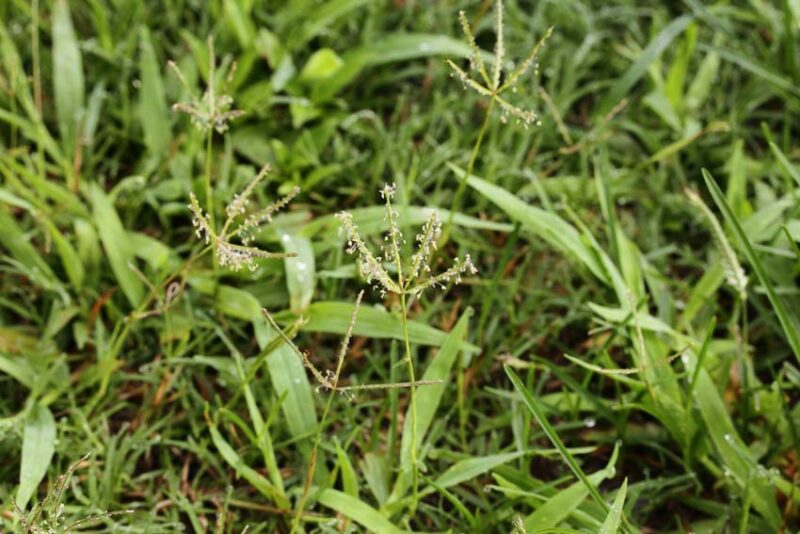
Bahia
Drought conditions and infertile soils create tough environments for growing lawns, especially if you’re trying to grow subtropical grass. Like other warm-season grasses, drought-tolerant grasses such as buffalo and Bahia grass enjoy the heat, but they require less water to grow and can survive without water for extended periods.
Grass Blends: Combining the Best of Different Species
Grass seed companies all over the United States make lawn seed blends that combine different types of grasses to create a perfect mix for their region.
The diversity of grass seed blends allows you to take advantage of the strengths of multiple grass species. Furthermore, you can combine them to grow a lawn that can withstand temperature extremes and remain resistant to pests and diseases.
Explaining Regional Climate: Factors to Consider
Several climate factors affect regional climates. The main factors to consider in defining your regional climate are temperature, precipitation, soil type, and sunlight exposure.
Temperature: Average Highs and Lows
Peak growing conditions in various climates primarily depend on temperature. In horticulture, temperature is one of the most important factors in explaining regional climate because temperature differences guide the life cycles of plants and other organisms.
Average high and low temperatures are affected by mountain ranges, elevation changes, ocean currents, and latitude, and all of these contribute to the overall climate of a region. Since grasses grow best in certain temperatures, it’s an important consideration when choosing the right type of grass for your lawn.
Precipitation: Rainfall and Snowfall Patterns
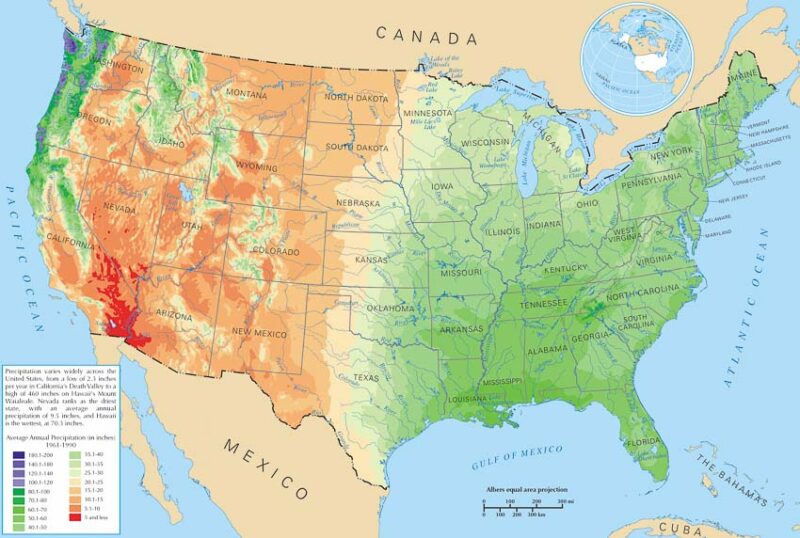
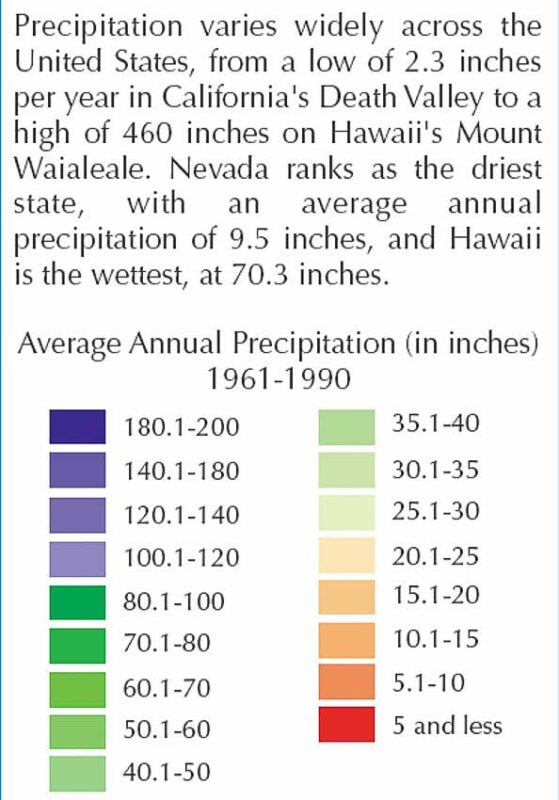
Like temperature, precipitation is affected by conditions created by mountain ranges, elevation, ocean currents, and latitude. Coastal regions that are more likely to get a lot of rain need grasses that are resistant to fungal growth and salt. Conversely, growing grass in arid climates is more successful when choosing drought-tolerant grasses.
Cool-season grasses will tolerate long winters covered with snow for months, while warm-season grasses, with their subtropical origins, do not.
Soil Type: Nutrient Content and Drainage
The soil type in your region plays an important role in plant growth and is another important regional climate factor.
Both pH and texture determine soil type, with soil variations naturally occurring in different regions. Some regions have clay soils, and some have sandy or silt-based soils. While you can amend the soil in your yard, it still affects the type of grass that grows best in your region.
Sunlight Exposure: Full Sun, Partial Shade, and Full Shade
The amount of sun your yard gets is an important factor to consider when defining your regional climate zone. Solar radiation is required for healthy plant growth, and the amount of sunlight significantly affects plant life.
Sunlight exposure varies widely in different climate zones and is primarily affected by the amount of water vapor in the atmosphere. In your yard, sunlight exposure can be determined by how much shade is created by large trees and structures, as well as the direction your house faces.
Recommended Grasses for Regional Climates
Once you can describe your regional climate, you can choose the best grass types for your lawn. Discover the pros and cons of different types of grasses for every climate region.
Cool-Season Grasses for Northern Climates
These are the best types of grass for lawns in cool-season climates, where winters may be long and harsh, summers are mild, and peak growing conditions occur during the spring and fall.
| Cool-season grass | Advantages | Disadvantages |
|---|---|---|
| Kentucky bluegrass | Spreads easily and will create a thick, lush lawn | Needs a lot of water and is high maintenance |
| Ryegrass | Germinates quickly and is low maintenance | Doesn’t spread by stolons , so it won’t fill in without overseeding |
| Tall fescue | Has a high tolerance for cold, shade, and drought, and you can mow it tall so it develops strong roots | May go dormant in the summer without heavy watering and needs frequent mowing |
Warm-Season Grasses for Southern Climates
Here are the best warm-season grasses for southern climates, where summers are hot and dry, winters are mild, and peak growing conditions occur during the spring and early summer.
| Warm-season grass | Advantages | Disadvantages |
|---|---|---|
| Bermuda grass | Spreads quickly, likes hot weather, and can be mowed short | Turns brown during dormancy and doesn’t tolerate cold temperatures |
| St. Augustine | Shade and heat tolerant, grows well in various soil types and pH levels, and chokes out weeds | Doesn’t tolerate heavy foot traffic and is susceptible to pests and diseases |
| Zoysia | Grows well in different soil types and is drought and salt tolerant | Grows slowly, turns brown when it goes dormant and develops thick thatch |
Grasses for Transition Zones
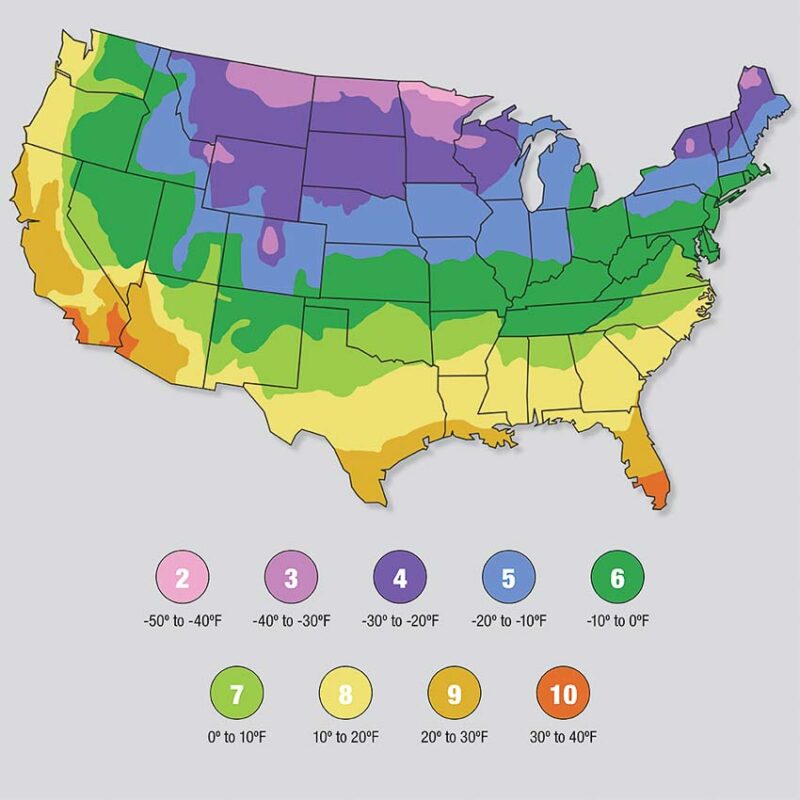
There are many parts of the United States that fall in the transition zone between cool-season and warm-season climate regions. It’s best not to mix warm and cool-season grasses for best results.
Depending on the type of grass you choose, lawns in transition zones can experience dormancy periods during the summer or winter, depending on the type of grass you choose. Sometimes people use cool-season grasses in warm-season zones to overseed their lawns and keep them green during the winter.
To grow a lawn successfully in the transition zone, start with the best type of grass for your soil pH, soil type, and sun exposure. Due to their heat and cold tolerance, tall fescues and Kentucky bluegrasses are usually a top choice for transition zone lawns.
Drought-Tolerant Grasses for Arid Regions
Here are the best drought-tolerant grasses for arid and semi-arid regions in the United States, where rainfall is typically less than 20 inches annually. These warm-season grasses are well suited for growing lawns in the dryest conditions.
| Drought-tolerant grass | Advantages | Disadvantages |
|---|---|---|
| Buffalo grass | Tolerates sun and shade, adapts to poor soils, and may only require a few mowings per year | Has deep roots, is ideal for large areas, and grows well without a lot of fertilizer even in poor, sandy soils |
| Bahia grass | Has deep roots, is ideal for large areas and grows well without a lot of fertilizer even in poor, sandy soils | Sparse growth that makes it susceptible to weed encroachment |
Planting Grass Seed: How and When to Sow for Optimal Growth
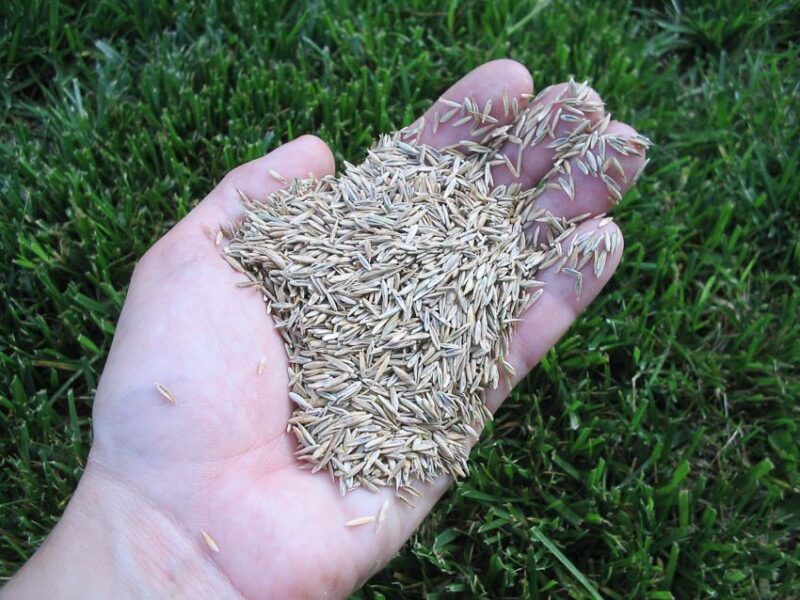
A great lawn starts with the best type of grass seed for your area, but when it comes to planting, timing is just as important. Discover more about how and when to sow grass seed for optimal growth.
Soil Preparation: Ensuring the Best Foundation
To ensure the best foundation for your grass seeds to take root and grow into a lush, green lawn, create a welcome mat of small-sized soil particles. Clear the top of the soil of any rocks or debris larger than a pebble.
Also, make sure that the soil is slightly moist so that the seeds stay in place when you water.
Planting Techniques: Seed vs. Sod vs. Plugs
To establish a healthy lawn, grass can be planted from seed, sod, or plugs. When choosing which planting method to use, consider several factors, including:
- How fast you want your lawn,
- The size of your budget,
- The size and scope of your project,
- The time of year, and
- The type of grass you are growing.
Tips for Planting Grass Seed
Seed is the most common and cost-effective method for planting grass, but it needs a lot of attention in the first few weeks. It takes longer to fully establish than sod or grass plugs do.
Start with healthy, well-tilled soil, and nurture your grass seedlings by watering lightly a few times a day during the first several days. Once the seeds germinate, keep the soil moist until your grass is tall enough to mow.
Tips for Planting Sod
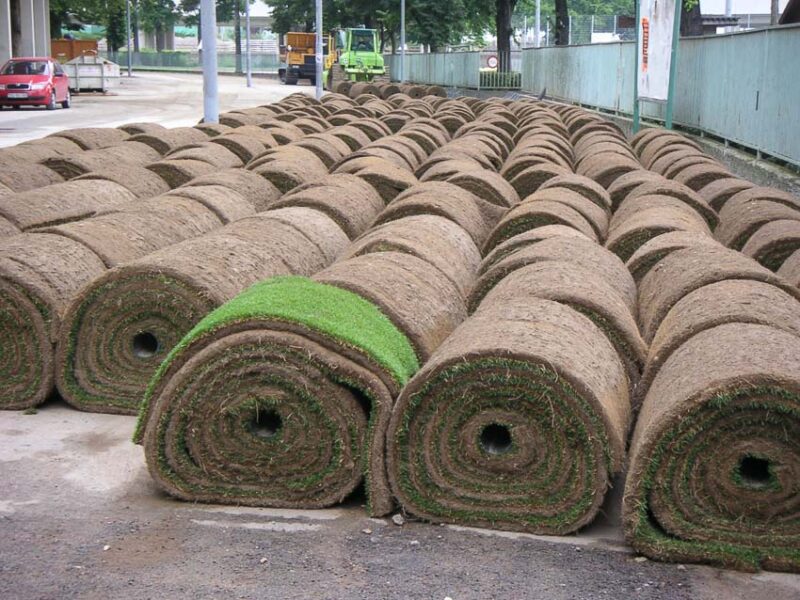
Sod is the most expensive way to plant grass, but it’s also the quickest.
Prepare your yard by clearing old grass, sticks, rocks, and other debris before purchasing the sod. Plant it quickly once it’s delivered, watering it as you go. Sod requires frequent watering during the first week, but after that, you can use a normal watering and fertilizing schedule.
Tips for Planting Grass Plugs
Plugs are less expensive than sod but cost more per square foot than planting grass seed. They require less coddling than starting a lawn with seed, and if you don’t mind waiting a few weeks for the lawn to fill in, they are a quick way to establish a healthy lawn.
Plugs can fill in a patchy lawn or start a new one.
Timing Your Planting: Best Seasons for Different Grass Types
No matter your planting technique, the best time to plant grass is during peak growing conditions. For cool-season grasses, that’s spring and fall; for warm-season grasses, the best time to plant is spring and early summer.
Post-Planting Care: Watering, Fertilizing, and Mowing
Lawns require frequent watering and mowing, with regular fertilization to stay healthy.
Grass needs about one inch of water per week. To prevent fungal growth and diseases, the best time to water your grass is in the morning.
You should mow your lawn at least once a week and sometimes more often during periods of intense growth. Use a lawn fertilization schedule to round out your lawn care practices and enjoy a luxurious green lawn all year round.
Grass Types for Regional Climates FAQs
How do I determine the best type of grass for my area?
To choose the best type of grass for your area, determine the growing zone for your region. Moreover, you should consider regional climate factors like rainfall, sunlight exposure, and the type of soil in your yard.
Can I mix different grass species for a more versatile lawn?
Lawns are more versatile when you mix different grass species. The best option is to choose a high-quality lawn mix from a grass grower in your region.
What is the best time to plant grass seed in my region?
The best time to plant grass seed in your region is during peak growing conditions. For warm-season zones, temperatures should be above 65°F (18°C), and for cool-season grasses, the best time to plant is when temperatures are between 55°F (13°C).
How can I improve the health of my lawn in a challenging climate?
Choosing the right type of grass is the best way to improve the health of your lawn. When you start with grass designed to grow well in your area, your chances of success are much higher.
Are there any grass alternatives for extremely dry or shaded areas?
It can be tough to grow grass in extremely dry or shady areas, but you can choose from several different types of ground covers for shade or try growing a clover lawn.

